The Benefits of Teaching Emotional Expression to Children with Autism
Fostering Emotional Skills in Autism: Pathways to Better Social Outcomes
Understanding the Impact of Emotional Expression on Children with Autism
Emotional understanding is a foundational component of social interaction and mental health, yet children with autism often face significant challenges in recognizing and expressing emotions. This article explores the multifaceted benefits of teaching emotional expression to children with autism, emphasizing innovative therapeutic interventions, strategic approaches, and the vital importance of raising awareness to support their developmental journey.
The Scientific Basis for Emotional Recognition Difficulties in Autism
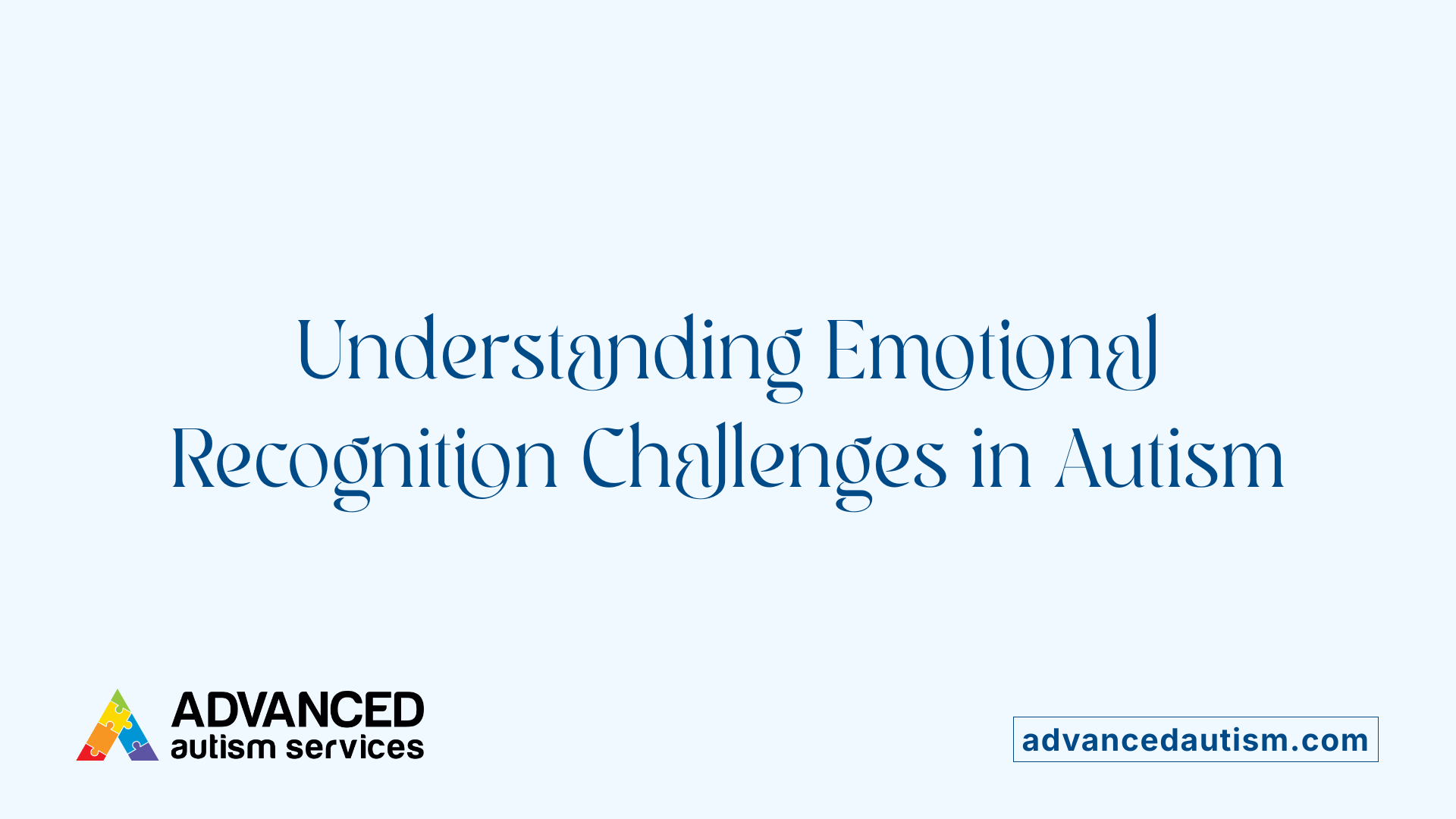
What are the challenges children with autism face in recognizing facial emotions?
Children with autism spectrum disorder (ASD) consistently show difficulties in facial emotion recognition (FER) when compared to their neurotypical peers. Research indicates that these children have lower scores on tests designed to assess their ability to identify and interpret facial expressions, especially those conveying emotions like sadness or happiness. This impairment impacts their social communication, making it harder for them to understand others' feelings and respond appropriately.
Which brain regions are involved in emotion processing?
The neural mechanisms behind emotion recognition involve key areas of the brain such as the fusiform face area and the amygdala. The fusiform face area is crucial for facial recognition, while the amygdala plays a significant role in processing emotional reactions. Abnormalities or atypical development in these regions are linked to the difficulties observed in children with ASD. These structural and functional differences contribute to their challenges in decoding facial expressions and reacting emotionally in social settings.
How does emotional development differ between autistic and neurotypical children?
Autistic children often develop emotional understanding more slowly and with atypical patterns compared to neurotypical children. They tend to have poorer emotional regulation, relying on simpler strategies to manage their feelings. This can result in less engagement in social interactions and difficulties in emotional reciprocity.
Research highlights a divergence in how these groups process and respond to emotional stimuli, which affects their social learning and development. Early differences in emotional responsiveness, such as fewer social smiles and gaze coordination during childhood, are early indicators of these developmental disparities.
How does this understanding impact interventions?
Interventions aimed at improving emotional recognition and regulation are essential. Training programs that focus on affect recognition—through scripts, prompts, and modeling—have demonstrated success in teaching affective responses. Incorporating emotional literacy into educational settings and using tools like music therapy can further support emotional development.
Continued research and tailored intervention strategies could enhance social skills and emotional understanding, thus improving overall mental health outcomes for children with ASD and their integration into wider social contexts.
| Topics | Main Points | Details/Implications |
|---|---|---|
| FER challenges | Children with ASD show lower recognition abilities for facial emotions. | Affects social communication and emotional understanding. |
| Brain regions involved | Fusiform face area and amygdala show abnormalities in children with ASD. | Disrupts recognition of faces and emotional responses. |
| Developmental differences | Atypical emotional development and regulation in autistic children. | Leads to social interaction difficulties and reliance on simple regulation strategies. |
| Intervention approaches | Affect training and music therapy support emotional skills development. | Improve affective responses, social skills, and emotional regulation over time. |
Visual and Vocal Cues and Their Role in Emotion Recognition
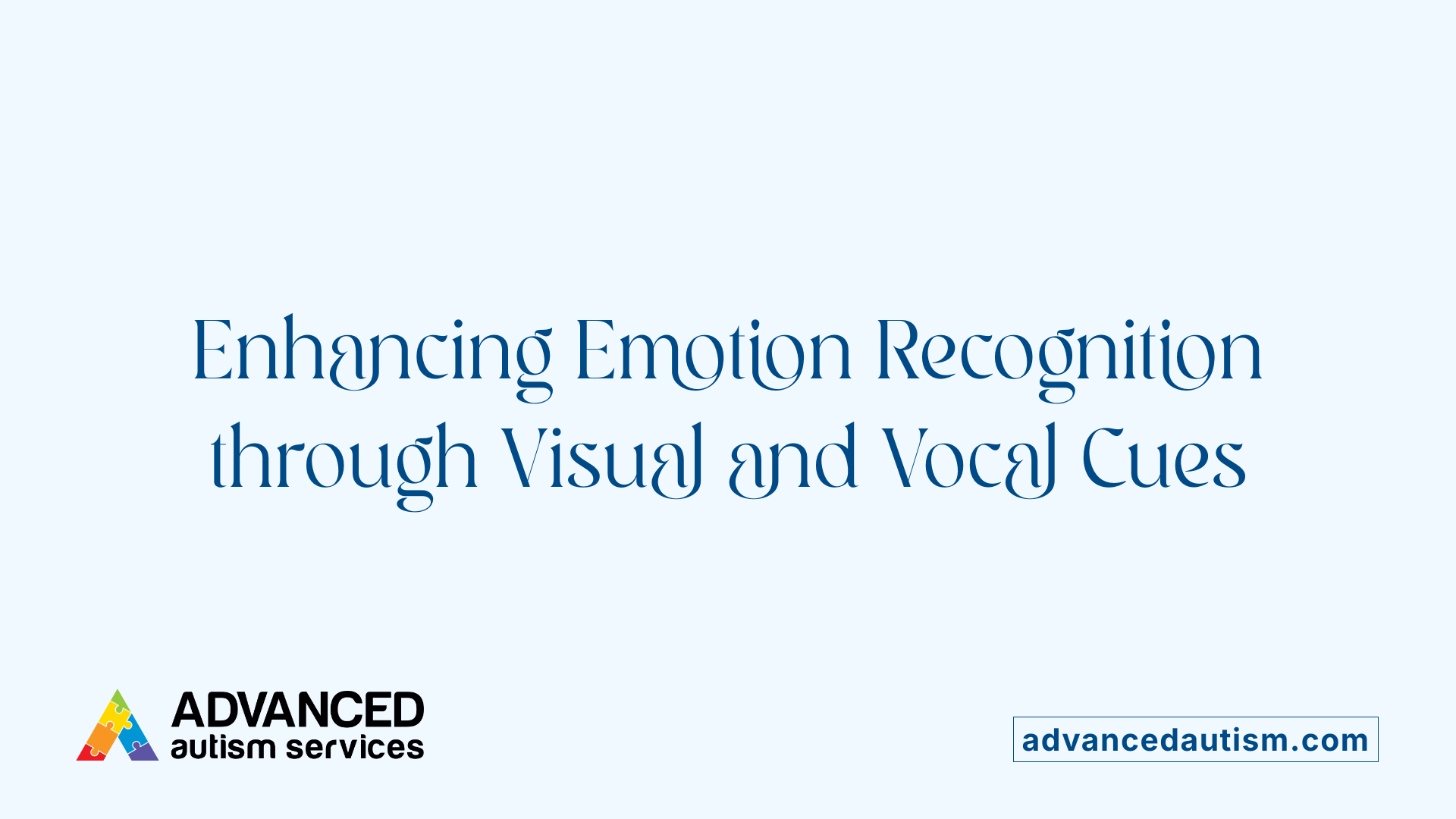
How quickly do children recognize happy versus sad faces?
Research shows that children, both with autism spectrum disorder (ASD) and typically developing peers, tend to recognize happy faces faster than sad faces. This perceptual advantage makes happy expressions easier and quicker to identify. For children with ASD, this means that positive emotional expressions can be processed more readily, which could be leveraged in social skills training. Recognizing positive emotions efficiently is an important step toward improving social interactions.
How do vocal tones impact facial emotion recognition?
Vocal cues, especially prosody—the tone, pitch, and rhythm of speech—play a significant role in emotion recognition. In children with ASD, sad vocal tones have been found to negatively impact their ability to identify facial expressions correctly. Specifically, when a sad tone is paired with a facial expression, children with ASD often struggle more to interpret the emotion accurately. This suggests that using happy and neutral vocal tones in interventions may support better emotion recognition and understanding.
Are there priming effects in emotion recognition for children with ASD?
Priming involves exposing someone to certain stimuli to influence their response to subsequent stimuli. In studies examining facial emotion recognition, no clear priming effect has been observed in children with ASD. One reason might be that children did not pay enough attention to the initial stimuli, or that the stimuli used were not strong enough to produce measurable priming effects. This indicates that attention focus and stimulus strength are important considerations for effective training programs.
Emphasis on facial and vocal cues in intervention programs
Children with ASD often show difficulties in recognizing and processing facial emotions and nonverbal cues, which affect their emotional development and social skills. Evidence suggests that integrating training that emphasizes happy and neutral emotions—while minimizing confusing or disruptive cues like sad vocal tones—can improve emotion recognition skills. Such tailored approaches are recommended to support social communication efforts in early intervention strategies.
Understanding the neurological basis of emotion recognition deficits
Research points to abnormalities in brain regions like the fusiform face area and the amygdala in children with ASD. These areas are integral for facial processing and emotional responses. Disruptions in these regions may underlie the challenges children face in decoding facial expressions and connecting them to appropriate emotional responses. Recognizing these brain differences helps inform targeted therapeutic approaches.
| Aspect | Findings & Considerations | Implications |
|---|---|---|
| Speed of facial emotion recognition | Happy faces recognized faster than sad faces in both ASD and control groups | Use positive expressions in social training |
| Impact of vocal tones | Sad vocal cues impair facial emotion recognition in ASD | Prioritize happy/neutral vocal tones in therapy |
| Priming effects | No consistent priming observed, possibly due to attention issues | Enhance stimulus engagement and attention focus |
| Neural correlates | Abnormalities in fusiform face area and amygdala linked to deficits | Targeted interventions may focus on these regions |
Understanding these visual and vocal cues' influence on emotion recognition helps develop better educational and therapeutic strategies, ultimately fostering improved social and emotional skills in children with ASD.
Neural Correlates of Emotional Processing in Autism
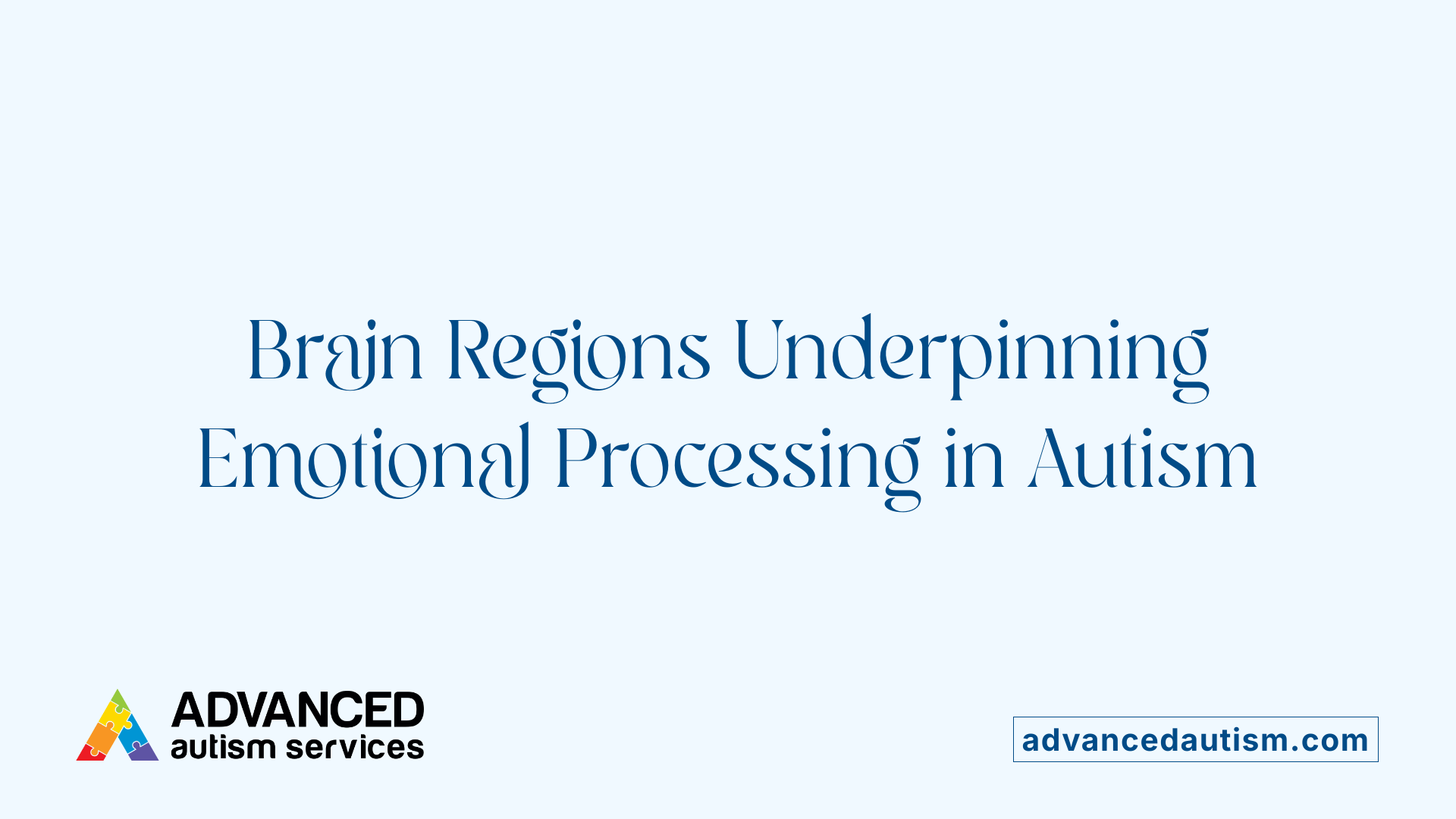
What are the abnormalities in the fusiform face area and amygdala?
Research indicates that children with autism spectrum disorder (ASD) exhibit differences in critical brain regions involved in processing facial emotions, notably the fusiform face area (FFA) and the amygdala. The fusiform face area, situated in the temporal lobe, plays a vital role in facial recognition. Studies show that in children with ASD, this region often displays reduced activity or atypical functioning, contributing to difficulties in recognizing and interpreting facial expressions.
Similarly, the amygdala, a structure deep within the temporal lobe, is essential for emotional processing and social behavior. In autistic children, the amygdala frequently shows abnormalities such as decreased volume or altered activation patterns, especially when processing emotional stimuli. These neural differences are strongly linked to impaired emotion recognition (FER), making it harder for children with ASD to decode facial cues and emotional signals from others.
Understanding these neural discrepancies helps explain why children with ASD struggle with social interactions and emotional understanding. These regions are interconnected and work collaboratively to interpret affective cues, and their dysfunction can severely impact emotional development.
Implications for emotion recognition difficulties
The neural abnormalities in the fusiform face area and amygdala highlight the biological underpinnings of emotion recognition challenges in ASD. Since these brain regions are integral to perceiving and responding to emotional cues, their atypical functioning results in observable deficits in facial emotion recognition, as well as broader emotional understanding.
These impairments contribute to social communication difficulties, affecting children’s ability to respond appropriately to others' emotions and to engage in reciprocal social interactions. Consequently, interventions often focus on enhancing emotion recognition and regulation skills, sometimes leveraging behavioral therapies, music therapy, and emotion-focused training.
Understanding the neural basis of these challenges underscores the importance of early identification and tailored intervention strategies that consider underlying brain differences.
| Brain Region | Typical Function | Abnormalities in ASD | Impact on Emotion Recognition |
|---|---|---|---|
| Fusiform Face Area | Facial identity recognition | Reduced activity or atypical processing | Difficulty recognizing facial expressions |
| Amygdala | Emotional response and social processing | Decreased volume or altered activation | Poor emotional recognition and social responses |
Expanding knowledge about these brain areas can inform more targeted therapies and improve outcomes for children with ASD.
Developmental Differences in Emotional Responsiveness
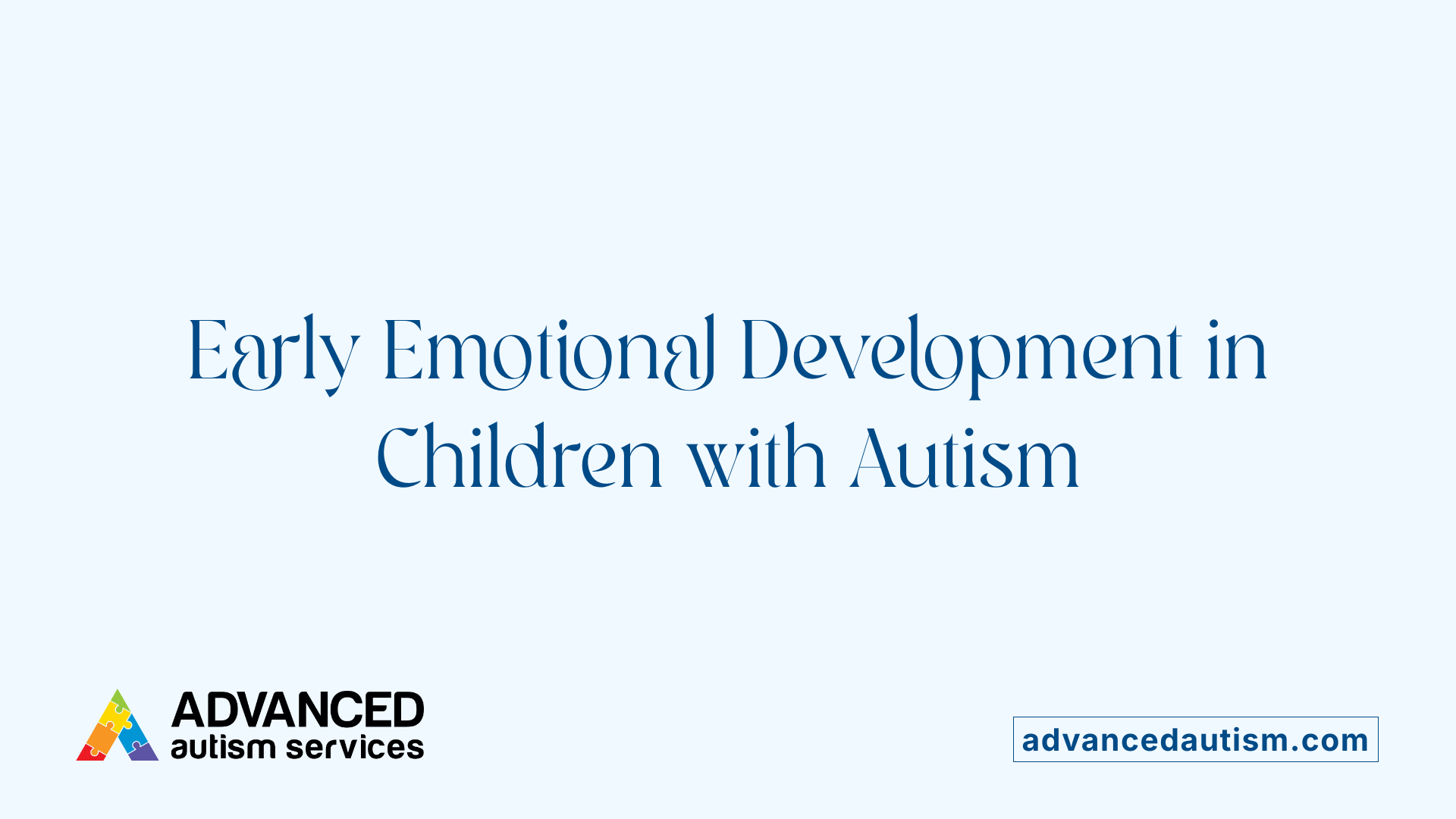
What are early affective responses in children with autism?
Children with autism often show distinct early affective responses compared to typically developing peers. During the first two years of life, they tend to display fewer affective reactions, such as social smiling and gaze coordination. These early signs suggest differences in how emotional responses develop and are expressed in children on the autism spectrum. Such differences can impact subsequent social interactions and emotional understanding.
How do children with autism differ in social smiling and gaze coordination?
Research indicates that children with ASD exhibit fewer social smiles and less gaze sharing during early development. These affective behaviors are crucial for establishing social bonds and understanding others' emotions. The lack of typical affective responses may hinder opportunities for social learning and emotional reciprocity, emphasizing the importance of early intervention.
What are the benefits of teaching emotional expression to children with autism?
Teaching emotional expression offers numerous benefits. It can improve communication skills, enhance emotional regulation, and foster better social interactions. Using tools such as AAC (Augmentative and Alternative Communication) systems, feeling words, stories, and videos helps children recognize, label, and communicate their feelings more effectively.
Developing emotional intelligence enables children to manage their emotions, demonstrate empathy, and navigate social settings more successfully. Strategies like modeling appropriate expressions, employing mood meters, and creating supportive environments further support emotional growth. Overall, fostering emotional awareness and coping skills promotes resilience, positive relationships, and overall mental health in children with autism.
| Aspect | Developmental Impact | Intervention Strategies |
|---|---|---|
| Early affective responses | Fewer social smiles and gaze sharing in first two years | Early behavioral therapies, caregiver engagement |
| Emotional understanding | Challenges in recognizing emotions | Use of stories, videos, and AAC systems |
| Social interactions | Difficulties in emotional reciprocity | Social skills training, modeled behaviors |
Understanding these developmental differences highlights the importance of targeted early interventions that promote emotional responsiveness, which can substantially improve long-term social and emotional outcomes for children with autism.
Behavioral Interventions for Developing Affective Skills
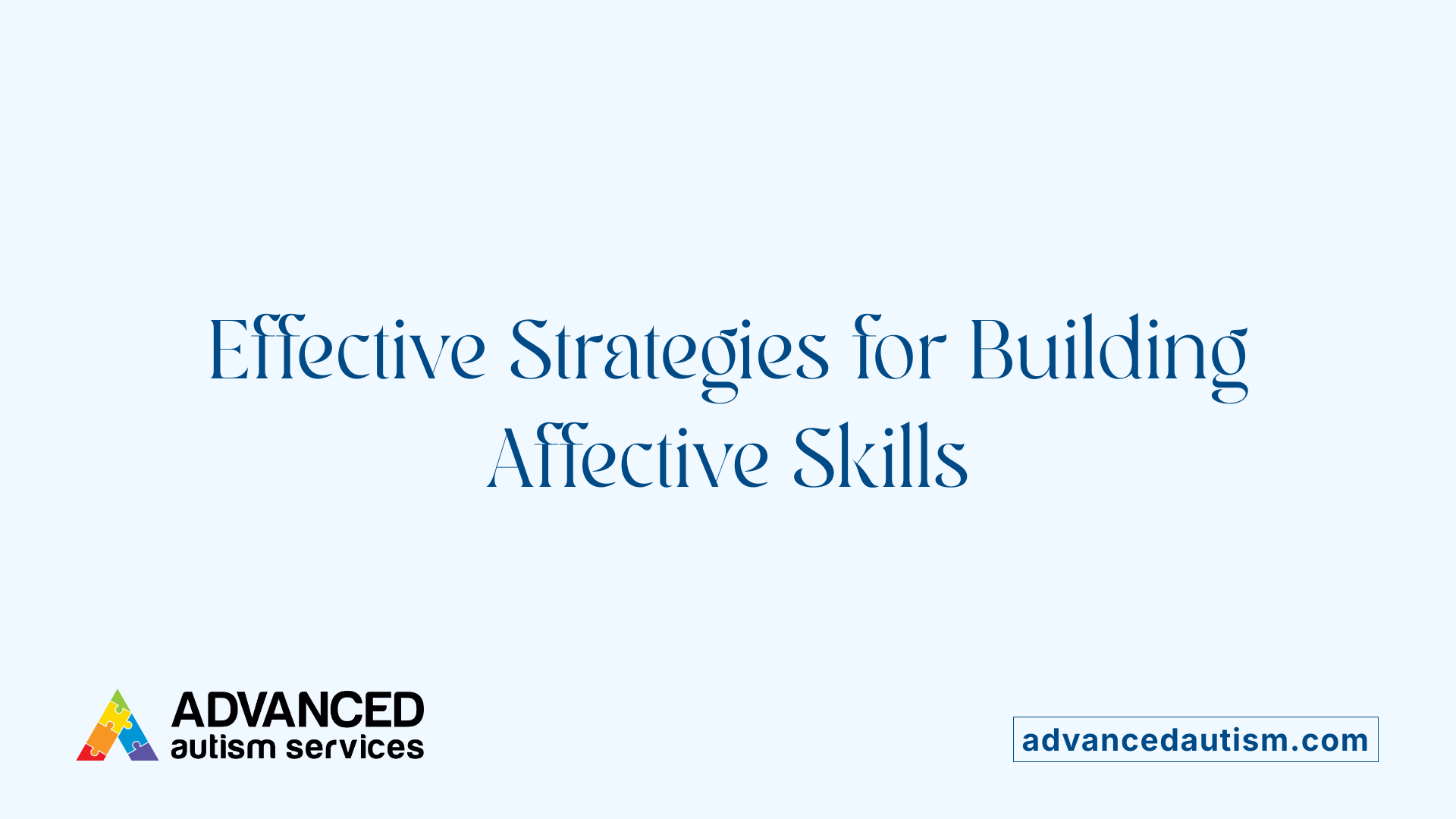
What strategies can be used to promote emotional recognition and expression in children with autism?
To help children with autism improve their emotional recognition and expression, various approaches have proven effective. Visual supports are fundamental; tools such as picture cards, visual narratives, and emotion scales like the 5-point scale or Zones of Regulation help children identify and label different emotions clearly. These visual aids make abstract feelings more concrete and understandable.
Incorporating engaging, fun activities is also crucial. Role-playing, pantomime games, and interactive media encourage children to practice recognizing emotions in natural settings. Such methods promote the generalization of skills beyond clinical environments. Music therapy and shared musical experiences are particularly beneficial because they activate neural systems involved in emotional processing and social interaction, supporting emotional understanding.
Emotion coaching is another valuable technique. It involves teaching children to recognize what calm feels like and establishing calming routines, such as rainbow breathing, to manage strong emotions. These strategies foster self-regulation and help children express emotions appropriately.
Tailoring interventions to individual needs enhances their effectiveness. Sensory sensitivities should be considered, and approaches like social stories or the use of social robots like QTrobot can further facilitate engagement and learning. Focusing on both emotion identification and regulation provides a comprehensive pathway to improving emotional skills in children with autism.
In summary, combining visual tools, engaging activities, music-based therapies, and personalized coaching creates a supportive environment that nurtures emotional recognition and expression among children on the autism spectrum. These strategies not only improve social interactions but also contribute positively to overall emotional development.
The Role of Affect Training in Social Skills Development

How does emotional expression training support the development of social skills in children with autism?
Affect training programs that include both verbal and nonverbal components play a crucial role in enhancing social skills among children with autism. These programs aim to improve children’s ability to recognize, interpret, and express emotions, which are vital for meaningful social interactions. By engaging children with tools such as social stories, emotion flashcards, and interactive technology like robots or computer-based modules, children learn to decode facial expressions, vocal cues, and body language.
Consistent practice helps children develop greater emotional insight, enabling them to respond more appropriately in social situations. As their understanding of emotions deepens, children become better at establishing peer relationships and participating actively in group settings. The training emphasizes modeling emotional behaviors, positive reinforcement, and supported learning strategies to facilitate the generalization of these skills across different environments and contexts.
Research indicates that affect training often requires an extended period, with months of dedicated intervention, involving hundreds of emotion-related scenarios. Longer and more intensive programs tend to produce more lasting improvements. When embedded into educational or inclusive settings, these strategies foster a naturalistic and functional acquisition of social-emotional skills, leading to enhanced confidence and social competence in children with autism.
How long does affect training typically last, and what intensity is recommended?
Affect training typically spans several months, with programs often involving hundreds of emotion-related statements, scenarios, or interactions. The duration can vary depending on the child's specific needs and the goals of the intervention. More intense training—characterized by frequent sessions and rich, varied scenarios—generally results in more robust and lasting effects. Programs may incorporate several sessions per week, each lasting from 30 minutes to an hour.
How can affect training be integrated into educational settings?
Embedding affect training into classroom and center-based programs is highly recommended. Integration can be achieved through inclusive curricula, where emotion recognition and regulation are part of daily lessons. Strategies such as social scripts, promptings, reinforcement, and modeling are effective in teaching children how to respond to emotional cues.
Incorporating these strategies into regular activities promotes naturalistic social interactions. This approach supports not only emotional understanding but also fosters broader social skills like sharing, turn-taking, and cooperation. The goal is to create a supportive environment where children practice emotion-related skills consistently, leading to improved social communication over time.
Incorporating Emotional Literacy into Educational and Support Plans

Why is raising awareness and providing information about therapeutic methods important for emotional development in children with autism?
Raising awareness and disseminating information about therapeutic strategies are essential steps in supporting emotional growth in children with autism. They help families, teachers, and clinicians better understand the emotional challenges faced by these children, such as difficulties in recognizing and responding to emotions.
Understanding these challenges early on allows for timely interventions that target emotional regulation and social communication deficits. For example, knowledge of tools like visual supports, mindfulness practices, and programs such as Zones of Regulation can empower caregivers to teach children how to identify and manage their emotions effectively.
By improving awareness, caregivers can implement practical methods that reduce problematic behaviors like tantrums and aggression, which often stem from frustration or emotional dysregulation. Additionally, increased understanding supports the development of ASD-specific assessment tools, enabling more accurate diagnoses and personalized treatment plans.
These efforts foster a supportive environment in which children can develop emotional literacy—learning to express, understand, and regulate their feelings—which is crucial for their social integration and mental health.
Use of scripts, prompting, reinforcement
One effective approach involves using scripts and prompts during social and emotional learning activities. Scripts provide children with ready-made language for expressing emotions and responding to social situations, which helps them navigate interactions more confidently.
Prompting involves cues or signals that encourage children to practice emotional responses or social behaviors, gradually reducing assistance as they become more independent. Reinforcement through praise or rewards encourages consistent engagement in emotional regulation exercises.
These strategies are often integrated into behaviorally-based interventions like Applied Behavior Analysis (ABA), which emphasize systematic teaching, repetition, and reinforcement to generalize skills across various situations.
Inclusion in inclusive or center-based settings
Integrating emotional literacy and regulation programs into inclusive and center-based educational settings benefits children with ASD by promoting naturalistic learning opportunities. Such environments allow children to practice emotional skills alongside typically developing peers, fostering social acceptance and understanding.
Educational programs that embed affect training—using scripts, prompts, and reinforcement—can be seamlessly incorporated into daily routines. This approach supports consistent practice and helps children develop resilience and social competence in real-world contexts.
Embedding these strategies in inclusive classrooms also promotes the generalization of skills across different settings and interactions, which is vital for long-term progress.
| Aspect | Approach | Benefits | Additional Notes |
|---|---|---|---|
| Use of Scripts and Prompts | Systematic teaching and cues | Improves emotional expression and recognition | Can be customized for specific emotions or situations |
| Reinforcement Strategies | Praise and rewards | Encourages engagement and mastery | Needs consistent application for effectiveness |
| Inclusion in Classroom Settings | Embedding into routines | Facilitates generalization and social integration | Promotes natural social interactions |
| Long-term Impact | Building emotional literacy | Supports emotional regulation and mental health | Requires ongoing support and practice |
Fostering emotional awareness through targeted education and supportive practices helps children with autism develop into more socially competent and emotionally healthy individuals. Incorporating proven interventions into everyday educational settings promotes ongoing growth and improves overall quality of life.
Empowering Children with Autism Through Emotional Growth
Enhancing emotional expression and regulation in children with autism is a critical step toward fostering their social competence, mental health, and overall quality of life. Through targeted interventions such as music therapy, behavioral training, visual supports, and inclusive educational strategies, children can develop essential emotional skills that underpin successful social interactions and personal resilience. Raising awareness among caregivers, educators, and clinicians about these therapeutic methods ensures early and tailored support, making a profound difference in their developmental trajectories. As research continues to shed light on the neural and developmental aspects of emotion in autism, the integration of these insights into practical applications remains paramount. Ultimately, empowering children with autism to understand and communicate their emotions not only benefits their immediate social environment but also equips them with lifelong skills for well-being and interpersonal engagement.
References
- Facial emotion recognition in children with autism spectrum ...
- Autism Spectrum Disorder (ASD) and emotions
- Understanding Emotions in children with Autism
- Teaching Children with Autism Spectrum Disorder to ...
- Emotional Regulation Strategies
- Emotion Regulation: Concepts & Practice in Autism ...
- Understanding Emotional Development and ASD







